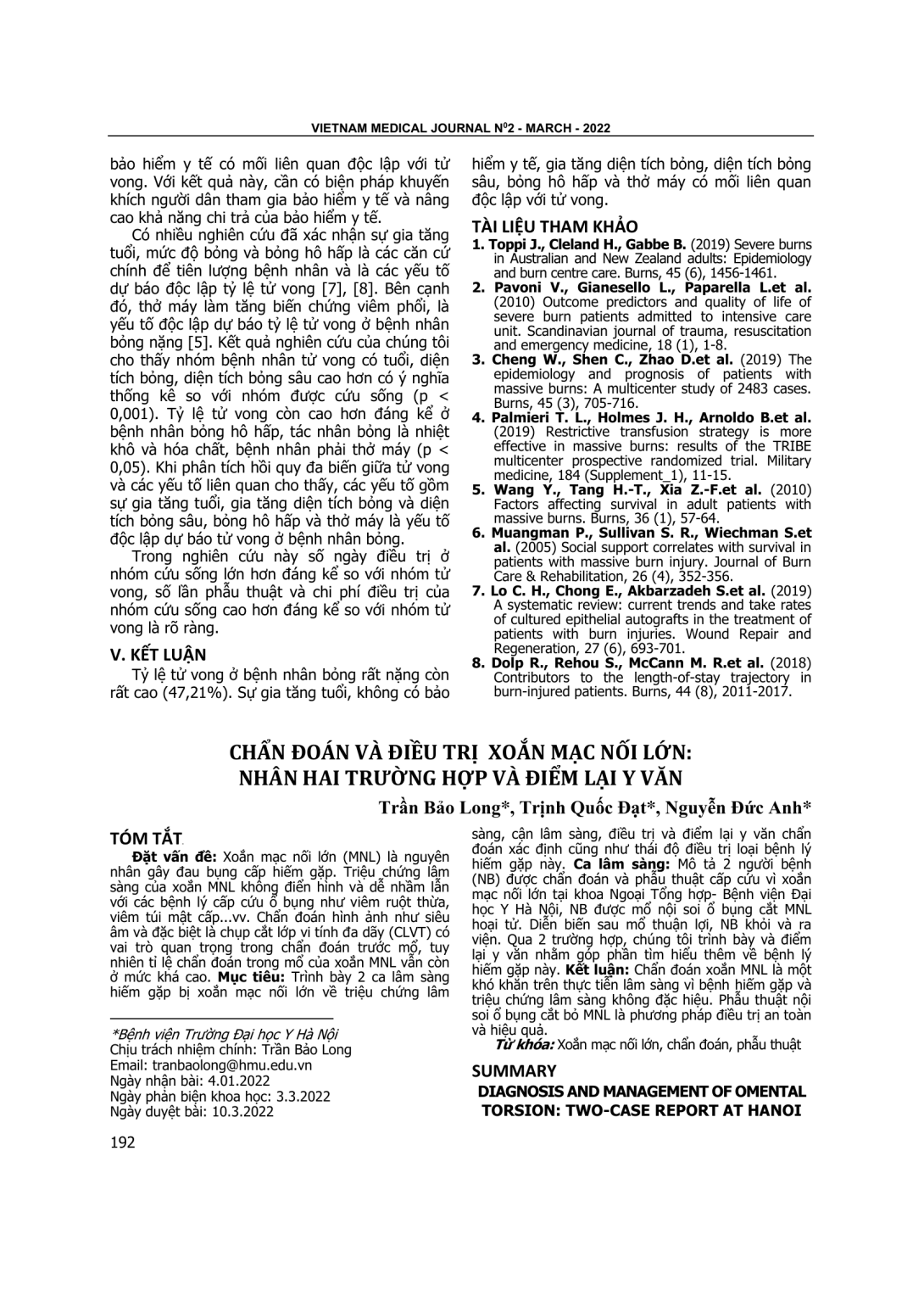
Xoắn mạc nối lớn (MNL) là nguyên nhân gây đau bụng cấp hiếm gặp. Triệu chứng lâm sàng của xoắn MNL không điển hình và dễ nhầm lẫn với các bệnh lý cấp cứu ổ bụng như viêm ruột thừa, viêm túi mật cấp...vv. Chẩn đoán hình ảnh như siêu âm và đặc biệt là chụp cắt lớp vi tính đa dãy (CLVT) có vai trò quan trọng trong chẩn đoán trước mổ, tuy nhiên tỉ lệ chẩn đoán trong mổ của xoắn MNL vẫn còn ở mức khá cao. Mục tiêu: Trình bày 2 ca lâm sàng hiếm gặp bị xoắn mạc nối lớn về triệu chứng lâm sàng, cận lâm sàng, điều trị và điểm lại y văn chẩn đoán xác định cũng như thái độ điều trị loại bệnh lý hiếm gặp này. Ca lâm sàng: Mô tả 2 người bệnh (NB) được chẩn đoán và phẫu thuật cấp cứu vì xoắn mạc nối lớn tại khoa Ngoại Tổng hợp- Bệnh viện Đại học Y Hà Nội, NB được mổ nội soi ổ bụng cắt MNL hoại tử. Diễn biến sau mổ thuận lợi, NB khỏi và ra viện. Qua 2 trường hợp, chúng tôi trình bày và điểm lại y văn nhằm góp phần tìm hiểu thêm về bệnh lý hiếm gặp này. Kết luận: Chẩn đoán xoắn MNL là một khó khăn trên thực tiễn lâm sàng vì bệnh hiếm gặp và triệu chứng lâm sàng không đặc hiệu. Phẫu thuật nội soi ổ bụng cắt bỏ MNL là phương pháp điều trị an toàn và hiệu quả.
Omental torsion is a rare cause of an acute abdomen. Symptoms are nonspecific and easily mistaken with other more common intra-abdominal pathologies (e.g. acute appendicitis and cholecystitis). The widespread and increasing use of computed tomography (CT) has played an important role for making a specific diagnosis. However, the intraoperative diagnosis rate of omental torsion is still quite high. Objectives: This work aims to describe two patients with diagnosis of omental torsion in terms of clinical and paraclinical symptoms, management strategies and review of the literature confirming the diagnosis as well as the treatment attitude of this rare disease. Case report: We present two patients who were diagnosed and urgently operated for torsion of primary omentum at the Department of General Surgery- Hanoi Medical University Hospital, the patients underwent laparoscopic surgery to remove necrotic omentum. The postoperative course was favorable, the patients recovered and were discharged from the hospital. Conclusion: Omental infarction generally presents with nonspecific clinical signs often masquerading as other more common abdominal diagnosis. Laparoscopically omentectomy is a safe method in diagnosis and management of this condition.
- Đăng nhập để gửi ý kiến
